
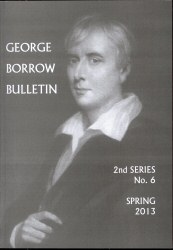 The Spring 2013 George Borrow Bulletin is now out (Series 2,
No. 6).
The Spring 2013 George Borrow Bulletin is now out (Series 2,
No. 6).
Members should have received their copy during May 2013.
We’re continuing with abstracts of the main articles and also giving some information on the contributors.
We hope to expand this area in future.
In September 2012 members visited Gibraltar and Tangier following in Borrow’s footsteps. Lots of reports on these visits are in this Bulletin: members who didn’t attend don’t need to miss out. The reports are accompanied with pictures (some in colour), and the papers given at the time are included, some with expanded content.
The next edition of the George Borrow Bulletin is being prepared and should be out in Autumn 2013. Contributors please note that the deadline for contributions has been brought forward a month, and is now 31 August 2013.
George Borrow Bulletin 2nd Series nº 6 (Spring 2013) |
||
News |
||
2 |
|
Membership of the Society |
2 |
|
Recent events |
Future events |
||
2 |
|
(1) 27 July 2013: Favourite readings: an afternoon with George Borrow |
3 |
|
(2) 1–2 November 2013: A Norwich Conference sponsored by the George Borrow Trust |
Articles |
||
3 |
Kerrigan, Colm |
A Tale of Two Castles |
15 |
Missler, Peter |
The Great Liverpool Court Case At Last! |
18 |
Chandler, David |
‘Celtic Fielding, Realist of Dreams!’: Edmund Kemper Broadus on Borrow |
Notes and Queries |
||
24 |
Keeton, Simon |
(1) A Passion for Words |
Reviews |
||
28 |
Murphy, Martin |
(1) H. James Rose, Viaje a la Andalucia inexplorada, reviewed |
29 |
Kerrigan, Colm |
(2) Jimmy Burns, La Roja: A Journey through Spanish Football, reviewed |
31 |
Laurie, Kedrun |
Exhibition Review: Bohèmes |
Other |
||
32 |
|
Readers Write |
33 |
|
Publications |
36 |
|
Borrow On-line |
39 |
|
Press Cuttings |
40 |
|
Borrow Portrayed |
40 |
|
A New CD by John Hentges |
Report and Proceedings of The George Borrow Society’s visit to Gibraltar, 26 September–1 October 2012 |
||
43 |
Ridler, Ann M. |
(1) Report on our visit |
52 |
Fraser, Angus |
(2) A Borrovian walk through Tangier |
58 |
Heredia, Blanca Krauel and Ridler, Ann M. |
(3) George Borrow in Tangier |
78 |
Perera, Jennifer Ballantine |
(4) George Borrow and his Vision of Gibraltar |
88 |
Ridler, Ann M. |
(5) Borrow in Andalusia and Gibraltar in 1839 |
100 |
Hopkins, Simon |
(6) Hebrew and Arabic in George Borrow’s account of Gibraltar and Tangier (The Bible in Spain, Chs 51–57) |
124 |
|
Back Numbers of Bulletins, Binders and Proceedings |
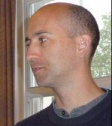 David Chandler obtained his D.Phil
at the University of Oxford with a thesis entitled ‘Norwich
Literature 1788–97: A Critical Survey’. He is now a
professor in the English Department at Doshisha University,
Kyoto. He has published numerous articles on the literature and
culture of the Romantic period, on Shakespeare, Dickens, and
Borrow, and now works mainly on musical theatre. Recent
publications include edited books on Italian composers Alfredo
Catalani and Italo Montemezzi and pioneering articles on
writer-composers Edward Cympson (1838–1905) and Alan
Doggett (1936–78). He loves to work on neglected figures
and believes that cultural history is very often simply not
fair.
David Chandler obtained his D.Phil
at the University of Oxford with a thesis entitled ‘Norwich
Literature 1788–97: A Critical Survey’. He is now a
professor in the English Department at Doshisha University,
Kyoto. He has published numerous articles on the literature and
culture of the Romantic period, on Shakespeare, Dickens, and
Borrow, and now works mainly on musical theatre. Recent
publications include edited books on Italian composers Alfredo
Catalani and Italo Montemezzi and pioneering articles on
writer-composers Edward Cympson (1838–1905) and Alan
Doggett (1936–78). He loves to work on neglected figures
and believes that cultural history is very often simply not
fair.
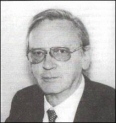 Sir Angus Fraser (1928–2001)
was a distinguished senior civil servant with a lifelong passion
for Borrow, at a time when Borrow’s reputation was largely
in eclipse. From 1951 for the fifty years until his death he
published well over 100 articles on Gypsies, Borrow and, with a
nod to his position as Chairman of the Board of Customs and
Excise, on smuggling! His book on The Gypsies (Oxford: Blackwell,
1992) has been translated into at least thirteen languages. His
George Borrow Bibliography, co-authored with the late Professor
Michael Collie (Soho Bibliographies, 1984), remains the major
point of reference on the publication history of Borrow’s
works. He was President of the George Borrow Society from its
establishment in 1991 until his death. His massive collection of
books and manuscripts was divided between the National Library of
Scotland (Borrow) and the Brotherton Library, University of Leeds
(on all matters Romani).
Sir Angus Fraser (1928–2001)
was a distinguished senior civil servant with a lifelong passion
for Borrow, at a time when Borrow’s reputation was largely
in eclipse. From 1951 for the fifty years until his death he
published well over 100 articles on Gypsies, Borrow and, with a
nod to his position as Chairman of the Board of Customs and
Excise, on smuggling! His book on The Gypsies (Oxford: Blackwell,
1992) has been translated into at least thirteen languages. His
George Borrow Bibliography, co-authored with the late Professor
Michael Collie (Soho Bibliographies, 1984), remains the major
point of reference on the publication history of Borrow’s
works. He was President of the George Borrow Society from its
establishment in 1991 until his death. His massive collection of
books and manuscripts was divided between the National Library of
Scotland (Borrow) and the Brotherton Library, University of Leeds
(on all matters Romani).
Blanca Krauel Heredia is Senior Lecturer in British Culture and Civilization in the Department of English Studies at the University of Málaga where she has been teaching for 35 years. Among her publications we could mention:
Sir James Douglas’s Death in Spain (1330) in “Scottish Historical Review” nº 187 April 1990, 84–90.
Events surrounding Thomas Malliard’s will. An English Merchant in Seville (1522–1523). “Proceedings of the II Conference of the Spanish Society for English Renaissance Studies” Oviedo, Universidad, 1992. 157
England according to Anthony Sherley; an English adventurer in the service of Spain. “Revista de Filología de la Universidad de la Laguna” 21, 2003, 179–185
Martin Haverty: un Irlandés en la España de Isabel II en “Humour and Tragedy in Ireland. Actas IV Congreso AEDEI .Universidad de Málaga 2005. 323–334
Viajando por Andalucía: el testimonio de algunas escritoras victorianas. “Revista de Filología de la Universidad de La Laguna”, 29; 2011, 141–162
 Simon Hopkins was born in Hemel
Hempstead and grew up in Cambridge. He studied Semitic languages
at the University of London. After some years as a research
assistant at Cambridge University Library working on the
mediaeval Hebrew and Arabic manuscripts of the Taylor-Schechter
Genizah Collection, he taught Hebrew at the University of Cape
Town. Since 1984 he has taught Arabic at the Hebrew University of
Jerusalem, where he lives with his wife Yehudit and cat Hodge. He
is an occasional contributor to the George Borrow Bulletin
and is planning to edit and annotate Borrow’s
Moorish Vocabulary, an unpublished work compiled by Borrow
in Tangier in 1839.
Simon Hopkins was born in Hemel
Hempstead and grew up in Cambridge. He studied Semitic languages
at the University of London. After some years as a research
assistant at Cambridge University Library working on the
mediaeval Hebrew and Arabic manuscripts of the Taylor-Schechter
Genizah Collection, he taught Hebrew at the University of Cape
Town. Since 1984 he has taught Arabic at the Hebrew University of
Jerusalem, where he lives with his wife Yehudit and cat Hodge. He
is an occasional contributor to the George Borrow Bulletin
and is planning to edit and annotate Borrow’s
Moorish Vocabulary, an unpublished work compiled by Borrow
in Tangier in 1839.
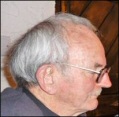 Colm Kerrigan was born and brought
up in rural Ireland and came to London on leaving school in 1959.
Following training as a teacher he spent 30 years in
primary-school classrooms. from which he gained release under a
generous retirement scheme before he was 60. What he liked best
about schools was training the football teams, so when he retired
he returned to university and spent five years researching the
origins of schoolboy football, for which he was awarded a Ph.D by
the University of London, with his modified thesis published as
Teachers and Football (RoutledgeFarmer, 2005). He has
written six other books and, besides the Bulletin, he has
had articles in a number of journals, including Irish Economic
and Social History, The London Journal, Soccer &
Society, The International Journal of the History of Sport,
Journal of the DH Lawrence Society and The DH Lawrence
Review.
Colm Kerrigan was born and brought
up in rural Ireland and came to London on leaving school in 1959.
Following training as a teacher he spent 30 years in
primary-school classrooms. from which he gained release under a
generous retirement scheme before he was 60. What he liked best
about schools was training the football teams, so when he retired
he returned to university and spent five years researching the
origins of schoolboy football, for which he was awarded a Ph.D by
the University of London, with his modified thesis published as
Teachers and Football (RoutledgeFarmer, 2005). He has
written six other books and, besides the Bulletin, he has
had articles in a number of journals, including Irish Economic
and Social History, The London Journal, Soccer &
Society, The International Journal of the History of Sport,
Journal of the DH Lawrence Society and The DH Lawrence
Review.
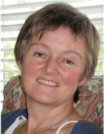 Dr Kedrun Laurie was formerly
Assistant Curator of the Geffrye Museum in London, specialising
in the history of interiors and costume. She subsequently worked
for some years as a consultant on the restoration of historic
parks and gardens. She received her doctorate in English
Literature from King’s College London in 2003. Her thesis,
entitled ‘“If I had Wings”: country
writers and the claims of conservation’, included a chapter
on George Borrow. She now works as an independent scholar in
Belgium with a particular interest in the art and literature of
the long nineteenth century.
Dr Kedrun Laurie was formerly
Assistant Curator of the Geffrye Museum in London, specialising
in the history of interiors and costume. She subsequently worked
for some years as a consultant on the restoration of historic
parks and gardens. She received her doctorate in English
Literature from King’s College London in 2003. Her thesis,
entitled ‘“If I had Wings”: country
writers and the claims of conservation’, included a chapter
on George Borrow. She now works as an independent scholar in
Belgium with a particular interest in the art and literature of
the long nineteenth century.
 Peter Missler was born in 1959 in
Amersfoort (The Netherlands). He briefly studied Philosophy at
the University of Utrecht before moving to Paris, where he mainly
exercised as bohemian. After four years as bookseller,
house-cleaner, electrician, hotel attendant and metro-busker, he
returned to Holland to earn a degree in Egyptology from the
University of Leiden. In 1993 he moved to Granada, Spain, and two
years later to Santiago de Compostela. He is a member of the
George Borrow Society and a regular contributor to the George
Borrow Bulletin. These Bulletin articles resulted in
two book-sized studies: A Daring Game in 2009 and The
Treasure Hunter of Santiago in late 2010. Peter Missler
presently lives in Brion, west of Santiago, with his wife
Palmyra, their son Yasin and the Homeric sheep-dog Argos.
Peter Missler was born in 1959 in
Amersfoort (The Netherlands). He briefly studied Philosophy at
the University of Utrecht before moving to Paris, where he mainly
exercised as bohemian. After four years as bookseller,
house-cleaner, electrician, hotel attendant and metro-busker, he
returned to Holland to earn a degree in Egyptology from the
University of Leiden. In 1993 he moved to Granada, Spain, and two
years later to Santiago de Compostela. He is a member of the
George Borrow Society and a regular contributor to the George
Borrow Bulletin. These Bulletin articles resulted in
two book-sized studies: A Daring Game in 2009 and The
Treasure Hunter of Santiago in late 2010. Peter Missler
presently lives in Brion, west of Santiago, with his wife
Palmyra, their son Yasin and the Homeric sheep-dog Argos.
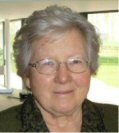 Dr Ann Ridler graduated from
Oxford as a modern linguist in 1956. Now retired, she was
professionally involved in course validation and the
accreditation of institutions in further and higher education
(1969–1999). Her PhD (cnaa,
1983) was on the subject of ‘George Borrow as a
Linguist’ and her thesis was subsequently printed for
private circulation in an edition of 100 copies (1996). She has
been engaged in research on Borrow since 1975. A founder member
of the George Borrow Society, she has been Chairman since 1997
and has edited the George Borrow Bulletin since 1991.
Dr Ann Ridler graduated from
Oxford as a modern linguist in 1956. Now retired, she was
professionally involved in course validation and the
accreditation of institutions in further and higher education
(1969–1999). Her PhD (cnaa,
1983) was on the subject of ‘George Borrow as a
Linguist’ and her thesis was subsequently printed for
private circulation in an edition of 100 copies (1996). She has
been engaged in research on Borrow since 1975. A founder member
of the George Borrow Society, she has been Chairman since 1997
and has edited the George Borrow Bulletin since 1991.
Being Irish. the chapters of Lavengro that relate Borrow’s memories of his time in Ireland are of particular interest to me, and, like all of Borrow. they offer intriguing opportunities for investigating how much of what he wrote was true in the sense that he recorded it as best he could recall it or was consciously or unconsciously embellished so that he could hold forth on a particular subject. His account of his family’s greetings from their landlord on their arrival in Clonmel would seem a likely example of the latter, while his eerie visit to the castle, insofar as I have been able to determine from exploring its history and geography, would seem to have been accurate. Even the old lady cursing Cromwell, which I first assumed to have been invention, turned out on investigation to have been an authentic curse of the time as recorded in an account of contemporary Irish folklore.
In the mid-1840s, George Borrow was summoned to London to testify in the court case Fearon versus Peninsular Steam Co, a trial resulting from the sinking of the steamship The Great Liverpool in February 1843 near Cape Finisterre. A number of new finds in the contemporary press, made by David Price, enable us to determine when the court case took place and what the litigants argued. As a result, only one small mystery remains: on whose behalf George Borrow was called as a witness.
Edmund Kemper Broadus (1876–1936), a distinguished American scholar, was the central figure in the English Department at the University of Alberta from 1908 until his death. He revealed a deep love for Borrow in his poem ‘Lavengro’, published in 1919. He did not, however, discuss Borrow in his critical writings, and appears not to have taught his work, so this was an extra-professional enthusiasm. Nevertheless, the poem itself has interesting things to say about Borrow, and suggestively characterizes him as a ‘Celtic Fielding, Realist of Dreams!’
Our late President, Sir Angus Fraser, died in 2001 but had already drafted a paper contrasting Borrow’s experience of Tangier in 1839 with Tangier at the present day, in readiness for a proposed visit by the Society. His paper makes it possible to reconstruct some at least of Borrow’s movements in the city and gives a vivid picture of Tangier as it is today.
George Borrow arrived in Tangier on the morning of 9 August 1839 to stay there until the middle of September that same year. In this article I study the reasons why he visited this Moroccan town. Once there he had contact with European people mainly and his knowledge of the Arabic language allowed him to establish relations with the native, Muslim and Jewish population. It is interesting to compare his points of view with those of other contemporary British travellers. He even did research on the presence of Gypsies in that country. Finally I want to point out certain commentaries about the European ignorance about the kingdom of Morocco and the routes that go through the Sahara desert which the author includes in his correspondence and the last three chapters of his book The Bible in Spain. The evidence shows that George Borrow, a missionary and tourist, was not an innocent traveller.
In April 1839 Borrow moved from Madrid to Seville, where he was based until April 1840. He was joined in June 1839 by his future wife, Mary Clarke, and her daughter Henrietta. Borrow continued to distribute the scriptures but was also pursuing his own agenda, making use of helpers to collect Gypsy material which would be included in his The Zincali; or, The Gypsies of Spain (1841). He was also intent on visiting Morocco. On his way he visited Gibraltar, about which he said little to his employers but devoted three chapters of The Bible in Spain to his experience there. The Bible Society insisted that he should return to England forthwith, but he managed to spin out his time in Andalusia to a year. Relations with the Society became strained, and on his return in April 1840 he found that his employers had no further wish for his services.
The article by Simon Hopkins in the present issue of the George Borrow Bulletin describes some of the linguistic aspects of Borrow’s account of his visit to Gibraltar and Tangier in 1839. In both places he met many interesting characters and, as usual, provides information about the languages they spoke. The essay is concerned particularly with the Jews and Arabs whom he met and the Hebrew and Arabic vocabulary which they used. Borrow heard many Semitic words in Gibraltar and Tangier and incorporates them (usually without any explanation) into his narrative. The article gives examples of his use of foreign vocabulary and provides identifications of the words. Some of Borrow’s data provide valuable early documentation for Moroccan Arabic.